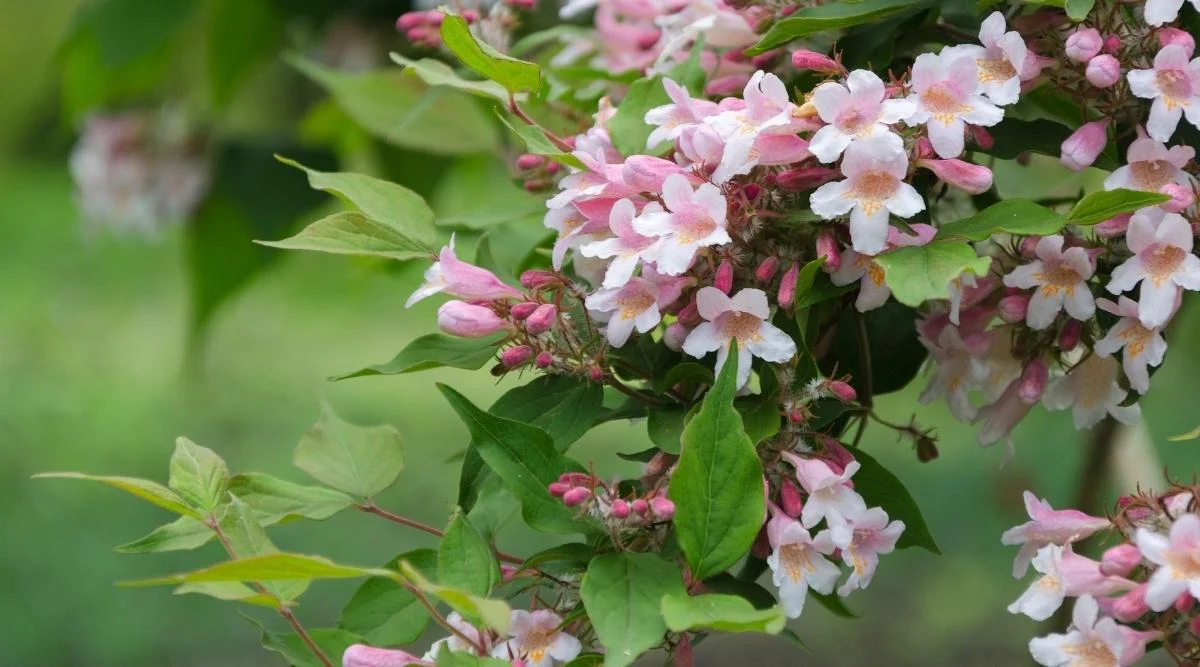journalofserviceclimatology.org – The Beauty Bush, scientifically known as Kolkwitzia amabilis, is a deciduous shrub that lives up to its name with a breathtaking display of flowers. Native to China, this plant has become a popular choice in gardens worldwide due to its graceful form, fragrant blooms, and ease of care. Blooming in late spring to early summer, the Beauty Bush offers a burst of color that attracts attention and admiration, making it a standout feature in any garden.
Appearance and Characteristics
The Beauty Bush is a medium-sized shrub that typically grows to a height of 6 to 10 feet (1.8 to 3 meters) with a similar spread. Its arching branches create a rounded, graceful shape that adds a soft, natural look to landscapes. The shrub’s oval-shaped, dark green leaves provide a lush backdrop for its stunning flowers, which appear in profusion in the spring.
The flowers of the Beauty Bush are the plant’s most captivating feature. They are small, tubular, and pink to light purple in color, often with a slightly darker throat. These blooms grow in clusters along the branches, creating a dense, showy display that covers the shrub in late spring to early summer, usually around May to June. The flowers have a sweet, pleasant fragrance that further enhances their appeal, attracting pollinators like bees and butterflies.
As the flowering season comes to an end, the shrub’s foliage remains attractive, with the leaves turning a soft yellow or bronze in the fall before eventually dropping for the winter. The plant’s attractive shape and foliage make it a year-round asset in the garden, even when not in bloom.
Growing Conditions and Care
Beauty Bush thrives in full sun to partial shade, though it performs best when it receives at least six hours of direct sunlight each day. It prefers well-drained, slightly acidic to neutral soil, although it is adaptable to a variety of soil types. This shrub is relatively low-maintenance and can tolerate a range of conditions, from dry to moderately moist soils, once established.
While it is drought-tolerant to a degree, Beauty Bush will benefit from regular watering during dry periods, especially in its first few years of growth. It does not typically require frequent fertilization but can benefit from an annual application of balanced fertilizer in early spring to support healthy growth and abundant blooms.
Beauty Bush is a hardy plant that can withstand cold temperatures, making it suitable for USDA zones 5 to 8. In colder climates, it may lose its leaves in the winter, but it will typically recover and bloom again in the spring.
Pruning is an essential part of Beauty Bush care. To encourage strong growth and better blooming, it is recommended to prune the shrub in late winter or early spring before new growth begins. Dead or damaged branches should be removed to maintain the plant’s shape and health. Light pruning after the flowering season can help keep the shrub tidy and prevent it from becoming too leggy.
Uses in the Garden
Beauty Bush is a versatile shrub that can be used in various garden settings. Its graceful form and beautiful blooms make it an excellent choice for flowering borders, hedges, or as a specimen plant. The shrub’s size and shape also make it ideal for planting in mixed shrub borders or woodland gardens, where its soft appearance can complement both evergreen and deciduous plants.
In addition to its ornamental value, Beauty Bush works well as a screen or privacy hedge. When planted in a row, it can provide a natural barrier with its dense foliage, making it a good choice for adding privacy to patios, decks, or garden areas.
The Beauty Bush’s ability to attract pollinators also makes it a great addition to wildlife-friendly gardens. Bees, butterflies, and hummingbirds are drawn to the flowers, adding an extra layer of life and activity to the garden during the blooming season.
Symbolism and Cultural Significance
The Beauty Bush is admired not only for its physical beauty but also for its symbolism. In many cultures, the plant represents love, beauty, and grace due to its stunning flowers and elegant growth habit. Its name, Kolkwitzia amabilis, reflects its gentle nature, with “amabilis” meaning “lovely” in Latin. In addition to its ornamental uses, Beauty Bush has been valued in traditional medicine, though it is not commonly used today.
Conclusion
Beauty Bush is a fantastic addition to any garden, offering stunning springtime blooms, attractive foliage, and a graceful form that enhances its surroundings year-round. Its low-maintenance nature and versatility make it suitable for a wide range of garden styles, from traditional to wildlife-friendly landscapes. Whether used as a specimen shrub, a hedge, or part of a mixed border, the Beauty Bush is sure to captivate with its elegant flowers and pleasant fragrance. With its ability to thrive in various conditions and attract pollinators, this beautiful shrub is an excellent choice for gardeners seeking both ornamental value and practicality.
